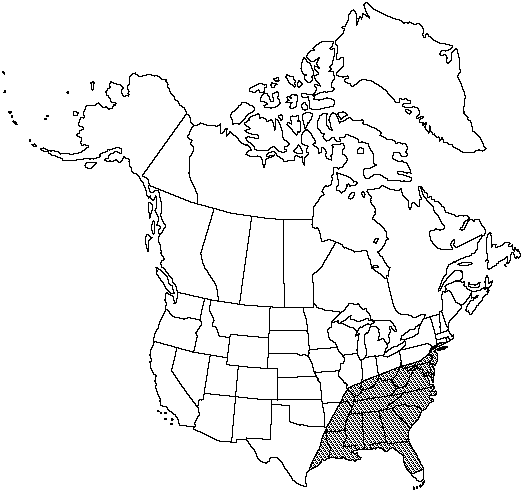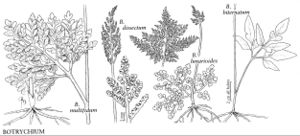Botrychium biternatum
Bot. Gaz. 22: 407. 1896.
Trophophore stalk 4–20 cm, 2–2.5 times length of trophophore rachis; blade green to dark green, plane, 2–3-pinnate, to 18 × 28 cm, herbaceous. Pinnae to 7 pairs, usually remote, horizontal, distance between 1st and 2d pinnae not or slightly more than between 2d and 3d pairs, undivided except in proximal 2/3–1/2. Pinnules elongate, obliquely lanceolate to narrowly lanceolate, margins nearly parallel and finely denticulate, apex short-acuminate, venation pinnate. Sporophores 1–2-pinnate, 2–3 times length of trophophore. 2n =90.
Phenology: Leaves green over winter, sporophores seasonal, new leaves appearing in late spring–early summer.
Habitat: Frequent in low woods and brushy fields
Elevation: 0–600 m
Distribution

Ala., Ark., Del., Fla., Ga., Ill., Ind., Ky., La., Md., Miss., Mo., N.J., N.C., Ohio, Okla., Pa., S.C., Tenn., Tex., Va., W.Va.
Discussion
Botrychium biternatum often grows with B. dissectum and B. jenmanii. The name B. biternatum was misapplied by L.Underwood to B. lunarioides (W.H. Wagner Jr. 1961).
Selected References
None.
